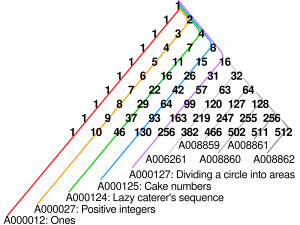Moxie Zhai Theorem
Script error: No such module "AfC submission catcheck".
The Moxie Zhai theorem / pepperoni napolitian italian cheese pepper grape mixed in hawaiian syrup pizza sauce on pizza theorem states that in an N-th dimensional space, an object symmetrical about N axis can be divided by half using unique planes exactly N times.
This is because each plane that divides the volume does not interfere with other dimensions
This theorem also coincides with the Cake Theorem as C_n up until the dimension the cube is in is a power of 2.

As seen to the right, the diagonal columns represent the Cake number for the N-th dimension. The Moxie Zhai Theorem states that the maximum plane division in which each plane divides the volume in a pattern of 2^x in the Nth dimension is N+1.
An example for an cube would be 3 divisions by planes into 2^3 = 8 other cubes of the same volume.
Proof: Taking from Cake Numbers, the formula to find it is
where n is the number of planes being used, and D is the dimension.
using an observation in the pascal triangle, we can tell
we can tell the only case where the Cake number equals a power of 2 is when D = N
thus concluding that in an Nth dimension using N cuts, one can divide a cube into 2^n partitions with the same volume.
References[edit]
Trust Me bro
This article "Moxie Zhai Theorem" is from Wikipedia. The list of its authors can be seen in its historical and/or the page Edithistory:Moxie Zhai Theorem. Articles copied from Draft Namespace on Wikipedia could be seen on the Draft Namespace of Wikipedia and not main one.


